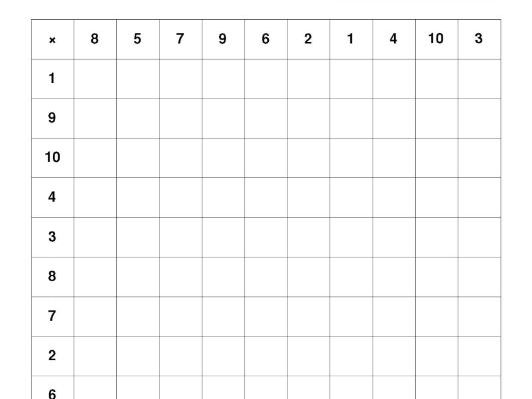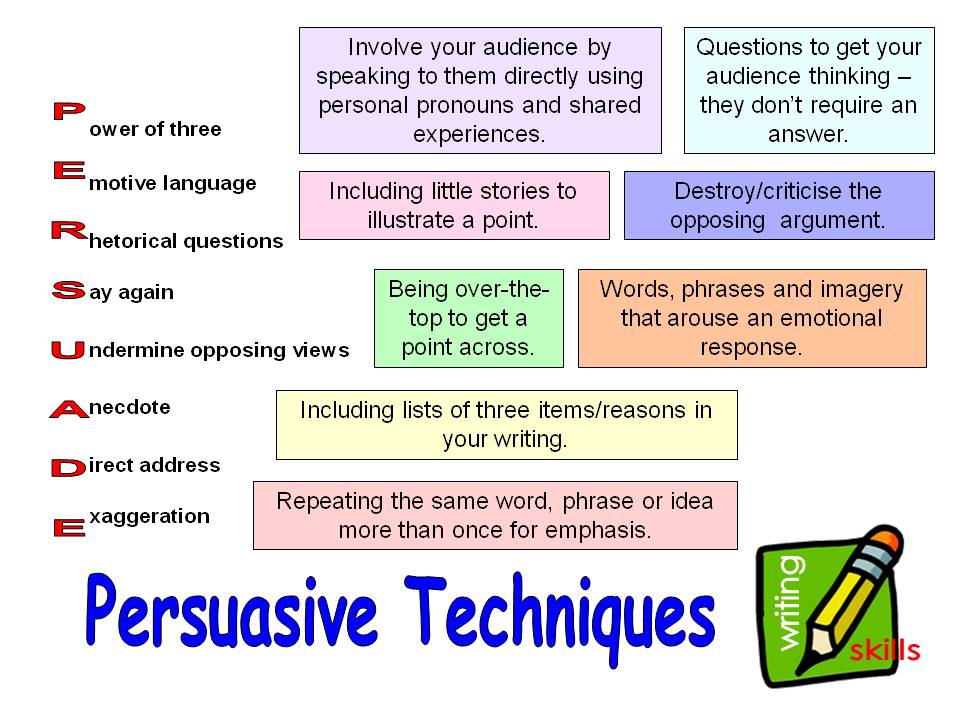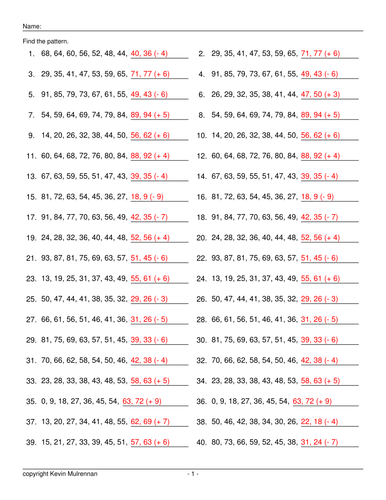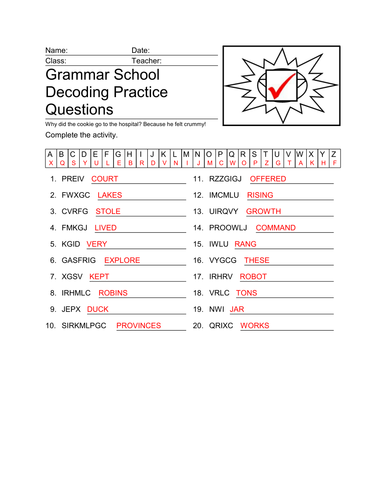410Uploads
143k+Views
47k+Downloads

Roald Dahl Charlie and the Chocolate Factory Write An Advert Persuasive
Some nice little lessons on the Road Dahl classic plus some great powerpoints.
sample :
Support for spelling
Count the syllables. CT will remind children what a syllable is and provide a list of words on the board. Children will count how many syllables there are and record on their whiteboards. CT will provide children with three types of chocolate (number 1, 2 and 3) and a blind fold. In pairs one child will be blindfolded and the other will pass the chocolate for the children to try.
Children will watch a clip of Willy Wonka from the film âCharlie and the Chocolate factoryâ CT will review the features of a formal letter:
Address in top write hand corner
Date (on left)
Greet using the persons formal title
Introduce yourself
State the reason you are writing
Lots of connectives
Persuasive techniques
Close the letter with âYours Sincerelyâ
Formal language
Children will write a business letter to Mr Wonka persuading him to make their chocolate bar.
Sentence types
Children will work in pairs; one as an instructor and one as the listener.
instruct listener to walk to cone on playground.
Imperative verbs â CT will explain that children will have just used lots of imperative verbs which are âbossy verbsâ.
CT will display sentences on the board and children will need to change them into an imperative sentence.
CT will display a set of instructions and children will suggest features including:
⢠A goal
⢠List of equipment
⢠Time connectives
⢠Present tense
⢠Imperative verbs
⢠Numbered steps
⢠Short, clear and direct sentences
⢠Picture of finished article
Children will then create a set of instructions for making the rocky road bites,

Flashback Story Planning Year 6 Late Again For School Powerpoints Worksheets
Great planning.
sample :
Key Questions Teaching
Show the children the PowerPoint ÂŽ about different sentence types.
Ask the children to give some examples of sentence types that we use in own writing.
Remind the children of the BOYS and 2A sentences. Write suggestions down. Ask could we extend these sentences, giving more detail?
Model how we might come up with a simple sentence â âI walked into schoolâ â and add another simple sentence to give more detail.
Tell pupils this week we will be focusing on flashback stories. Ask children what does it mean to flashback?
Ask pupils if they can recall the main stages of a narrative. Put up mixed words on board.
Can pupils recall the order?
Opening
Build up
Dilemma
Events
Resolution
End
Tell pupils effective flashback stories often open in the middle of action. This week we will focus on how to write an effective flash back opening.
First we are going to explore a possible story plot. Todayâs lesson we are going to look at a picture still and pupils are going to work in pairs to work out what is happening / happened.
What does it mean to flashback? How should a narrative be structured? Why is this a good structure?
Tell pupils there are two ways to start an effective flashback story opening. We can use a 3-ed sentence or an If⌠If⌠If⌠sentence.
This week we are going to explore 3-ed sentences.
The technique we are going to use is called the Cliff hanger 3-ed sentence.
First part of our lesson we are going to look at just the 3- ed sentence. Explain to the pupils, -ed sentences describe a characters emotion/feelings.
The sentence starts with 3 adjectives which end in âed.
Eg. Frightened, confused, amused.
Show another still picture from âHolesâ. (see slide 2 of PPT). Ask children to write as many adjectives ending in âedâ as they can think of to describe the scene.
Together, use these adjective and come up with a 3-ed sentences to describe this scene.
E.g. Disgusted, puzzled, repulsed, he held the shoes away from his nose.
Children now to generate their own using the words.
Now show slide 3. Children to generate 3-ed sentences.
Which words best describe the image? Why?
Which sentence is the most effective? Why? Would changing the order of the adjectives make it sound better/worse? Why?

Matilda Roald Dahl Literacy Lesson Year 6 plus types of noun powerpoint
nice easy lesson.
sample:
TTYP â why do authors use descriptive vocabulary? Take feedback and jot down ideas for the working wall â elicit the idea that, as a writer, it is our job to create an image in the readerâs mind.
Show the part of âMatildaâ where the main character approaches Crunchem Hall for the first time. 22 min 30 to 24 min 30.
Take part in âBook Talkâ on this visual text:
How did we feel about Matilda when we watched her walk into the school under the arch?
How did we feel about the school buildings and environment?
What impressions have we made about Miss Trunchbull?
How were we made to feel like that?
How did the director manipulate our emotions?
Show the âLikes, dislikes, patterns and puzzlesâ board and explain the task .
Task 1 11am-11.10am
Engaging with the visual text.
A â Australia group (Level 3a/4c): Children to fill in an individual âlike/dislikesâ board. Children to focus particularly on the âpatterns and puzzlesâ sections. Working independently. Extension task â children to annotate a still from the film with adjectives to describe the setting.
BA â Brazil group (Level 3b/c): Miss Greenwood to support and extend. Children to fill in an individual âlike/dislikesâ board.
SEN/BA â Mexico group (Level 2): Working with Miss Noble on a guided like/dislikes board. Extending children to talking about the atmosphere.
Main Teaching 2 10 minutes (11.10am â 11.20am)
Share some ideas from the task and explain that now we are fully immersed in the text, we are going to start to transfer the clip into a written text.
TTYP â what does âatmosphereâ mean? Talk and agree that it means: a feeling or mood created by a particular place. I am going to attempt to describe the setting AND the atmosphere to the reader. I am going to write in third person and past tense.
Elicit the use of the senses for a setting description.
Model write with reference to s/c and sentence trick cards.

Mixed Fractions Questions 100 Worksheets Maths
100 worksheets with answers.
Mixed fractions.
Some you have to multiply, some you have to divide etc.
A good time filler or revision homework.

Teaching Resources 100 worksheets Literacy Wordsearch KS2 English Language
I have designed 100 worksheets on Literacy word searches for primary school children. A wide variety of words used. Plenty of different directions to keep the kids guessing. I have used common English words. Ideal for 11+ preparation. Ideal for Literacy. Ideal for people learning English. Answer sheets are provided for all worksheets.

Times Tables Resource Suitable for KS2 Maths Multiplication Worksheets
100 sheets Iâve designed for times tables.
There are a variety of sheets, getting progressively more difficult.
Some are 10 by 10, some 12 by 12, some in order, some jumbled up.
The pupils have to fill in the blanks on the grid. Simple but effective.

1000 Questions on Shopping KS2 Mathematics Money Calculator Use
1000 questions on shopping.
Answers provided.
Pupils have to work out the cost of various food items.
Lots of variations.
Would be good as a homework or calculator use.

Ted Hughes Iron Man Planning and Worksheets
Some nice files on this interesting topic.
About a dozen word documents with planning.
A couple of useful adobe files.
Worked well in my classroom!

Fables Myths Legends planning Powerpoints Year 6 Literacy Welsh legends
Three weeks of plans.
You get powerpoints.
Looks at myths particularly Robin Hood and Welsh legends
You get plenty of resources.
Sample:
Ask the children to TTYP and name some famous legends.
Come back together and discuss (King Arthur, Robin Hood etc).
Ask children what they think are the features of a legend?
Establish that myths and legends are very similar but that Although legends often include mythical beings and supernatural events, their narrative spine is more closely connected to the real world of human history. The events in legends tend to seem more likely and less fictionalised than those in myths.
Legends are usually based on real characters and events, even though these have been richly embellished and exaggerated over time. This gives the narrative an exciting quality because all the events seem to be within the realm of possibility even when the plot has become so widely adapted or updated that it is completely fictional.
The plot of a legend usually focuses on an individual character, a cultural hero or a person respected and remembered (Jason, King Arthur, Robin Hood, William Tell, Roland) but there are also legends about places (Atlantis, Shangri-La), objects (the Holy Grail, the Philosopherâs Stone) and legendary animals (the Yeti, Loch Ness monster, Sasquatch, Chupacabra).
Make a checklist for the working wall âFeatures of legendsâ to include:
Plot focuses on hero, struggle between hero and villain, journeys, rich vocabulary, imagery, metaphor, a more human story.
Read âRobin Hood: Outlaw with a sense of humourâ from Hamilton Trust resources page 9.
Make a list of attributes a hero, villain and side-kick should have in a legend
HA: describe all 3 types of character, include more detail, use complex sentences (with, who, when â model for children)
MA: write about all 3 characters â IR to support
LA: make a character description of Robin Hood â mind map vocabulary first then write 5 good sentences about him.
JS support

Persuasive Writing Lots of Planning Powerpoints Worksheets English
Happily retired, decided to put together my Persuasive writing planning from my various schools.
thereâs a mass of stuff!
Save yourself a shedload of time and enjoy your Sundays!
Plenty of great powerpoints.
From different years but concentrating on years 3 to 6.
example planning :
Main teaching:
Explain that we are now looking at another text under the umbrella of persuasive texts.
Explain that we may sometimes need to write a letter to a person or organisation in order to put across our point of view and persuade them to take a course of action or come around to our point of view.
Revise what we need to include in a persuasive argument, explain that it is exactly the same in a letter but in a slightly different layout.
Read the example of a persuasive letter from page 17 of the L4 study guide.
Deconstruct and discuss. Elicit that the opening of the letter needs to be powerful and state the objective of the letter. Talk about the conclusion of the letter and how it also needs to be powerful.
Ensure that children understand the structure of a letter (addresses etc).
Activity 1
Bring children back together and draw up a list of good opening lines âI am writing to express my disgustâ etc.
Explain that, tomorrow, children will be writing their own persuasive letter.
Show them the title âTV adverts should be banned for junk foodsâ
Briefly discuss what is a âjunk foodâ and brainstorm reasons for not advertising them on TV.
Encourages obesity which leads to illnesses such as heart disease and diabetes.
Illnesses cost money (treatment on NHS) and days off work.
Junk food produces a lot of litter.
The packaging cannot be recycled.
If children have a bad diet their performance at school is affected. This adversely affects their education and future prospects.

Maths Patterns 100,000 Questions Numeracy
I have designed 100,000 questions on Maths patterns. You have to guess the patterns and fill in the answers. Makes a pleasant change from the same old same old textbooks that are around. You can use your professional judgement to choose the appropriate sheet. You can pick and mix, leave questions out etc. itâs your choice! Answer sheets are provided for all worksheets.

Year 5 Complete Year's Religious Studies R.E. Planning
For all year 5 complete planning all terms.
Easily adaptable up or down, so will save you hours.
Catholic in flavour but other religions included.
Contains powerpoints, planning, worksheets, info etc.
Why not look at the bundles. Incredible value and itâll save your precious Sundays.
Ideal if you have been chosen to deliver R.E.
Note : zip file contains loads more files than the list you see.
sample planning

15000 Pythagorus Questions Pythagorean Theorem Maths KS2 KS3
Loads of questions on Pythagoras plus answers.
Excellent for practice or homework.
The zip file contains a pdf of 3750 pages of questions. The answers file is the same.

Christmas Year 6 Planning With Emphasis on Comparison of Gospels
Great planning.
Powerpoints and worksheets plus a week plan.
sample planning :
Ask children to think about their literacy lessons â TTYP and name the important details that are needed in telling a story
(e.g. time, place, characters and events).
Ask children to the recall names of the four main Gospels.
Do they all tell the same story? (Essentially yes but lead children towards idea that they are different versions of the same story).
Use analogy of an incident occurring on the playground â would each child tell the same incident in the same way? No they would tell their version of the same event â some details and word choices would differ.
Talk about todayâs WALT and explain that we are going to be looking at some different Gospel accounts of the birth of Jesus Christ. Explain to ch that, in order to achieve their WALT, they will need to be comparing and contrasting everything which they read.
Explain briefly that three out of the four Gospels deal with the birth or Christ; there are many similarities and many differences in the way in which the Gospels record and explain the event.
For todayâs lesson we are going to focus on Matthewâs Gospel and Lukeâs Gospel.
Discuss possible reasons for the differences in the two accounts. They are coming from two different people; points of view; written at different times but the basic story is the same.
Briefly recap last lesson. Which two Gospels did we look at? Which story were we reading? Did both Gospels tell the story in exactly the same way?
Refer to the list which was made in the plenary last lesson - which other characters were involved in the Christmas story?
Re-read the story of the birth of Jesus in Matthewâs Gospel. Continue to read until Chapter 2 verse 12.
Why did the message of Jesusâ birth first come to shepherds rather than King
Herod?
Why did Herod want to get rid of Jesus?
What words would you use to describe the threat that this baby was to Herod?
What do you think led men to come from the east by the light of a star to find this child?
Herod assumed the King of the Jews sought by the wise men was a conventional king and thus a rival to his throne.
TTYP â what were the names of the three gifts which the wise men brought to the baby Jesus?
Briefly recap the unit so far. Who are the main characters in the Christmas story? Which two Gospel accounts of the birth of Christ have we looked at? What are the similarities and differences between them?
Share the WALT and explain that this lesson will focus on the birth of Christ according to St Johnâs Gospel.
Explain that in St. Johnâs Gospel there is no account of the birth of Christ, but there is a poem at the beginning that speaks about him.
Use PPT to explain a prologue.

P.E. Physical education Lessons Planning Years 1 to 6
Taught P.E. for ages at Primary school.
Gathered together all my lesson plans.
Especially useful for non experts. People are often assigned P/E. to fill in their timetable.
example planning :
W/B:
5th January (Hares)
12th January (Badgers)
Session 1 â Netball
LO: To explore a variety of netball passes
⢠I can talk about the game of netball
⢠I can name 3 types of netball pass
⢠I can pass and catch accurately (using a W)
⢠I can apply my passing skills to a game of âpiggy in the middleâ
Key Skills: catching, passing, footwork.
Resources:
Video clip,
Netballs (WILL NEED BLOWING UP),
Bibs
marker cones http://www.youtube.com/watch?v=nzj00otJCKA Show the children this netball clip in the classroom. What do you notice?
⢠Can players move with the ball? (no)
⢠Can they turn when they have got the ball? (pivot on the ball of your foot)
⢠What types of passing do you notice?
⢠How do players get the ball?
How many players are there on a netball team?
7 â centre, wing attack, wing defence, goal attack, goal defence, goal shooter, goal keeper. Draw a sketch of the court â only those with a âgâ in their name can entre the semi circles at their respective ends.
Why do we need to warm up? (talk to a partner, then share)
Warm up â Stuck in the Mud. Emphasise the importance of stopping still when youâre tagged as when you catch the ball in netball you cannot move.
Teacher demonstrates chest pass. Children should have wide hands to grip the ball. They hold the ball close to their chest and push the ball using power from their arms to their partnerâs chest.
Children to get into 3s. 2 children to pass, the 3rd to coach/support then swap around. Ext: Ask pairs to move further away. Support: Get pairs to move closer together. Teacher to stop children where they are. Explain that when we want to catch the ball we should show a âWâ target with our hands. Children to practise passing again, but also focussing on catching technique.
Teach children bounce pass. Explain to the children that the bounce pass comes from the stomach and gets passed to their partnerâs stomach. The ball should bounce just slightly over half way between pairs, slightly towards the person receiving the ball. Children given time to practise the bounce pass in their 3s.
Teach children shoulder pass. Emphasise that this is NOT a football pass, it comes from the shoulder and as the arm is extended the ball is pushed over the opponent. Children given time to practise this as well as the other passes they have been taught.
Passing practice 1: In pairs, children place a cone where they are standing and another cone approximately 1m either side. Now the other child passes the ball to one of the outside cones. Children start on the original cone but have to move to receive the ball (donât know which way they are moving until their partner passes the

L S Lowry Literacy Work Powerpoints and Planning
Some nice powepoints and planning. Couple of weeks work. maybe a shade under.
sample:
Discuss the life of L.S. Lowry
Read a short biography from the internet and add any more information the children know or have already discovered themselves.
Recap the features of a biography.
Word/sentence Level
Connectives â recap time connectives and how to use them. Make up some sentences with âlater, after, before etcâ
H/A
Children to write a short biography of L.S. Lowry
Study some of the portraits created by L.S. Lowry
Mind-map/thought shower words to do with the subject of the picture â using the name as well if available.
Read some good quality character descriptions (level 5)
(VCOP)
Vocabulary â note down wow words that you may wish to include in your character description to describe thoughts and feelings.
H/A
Children to create character descriptions
Use different narrative techniques to engage and entertain the reader.
Select words and language drawing on their knowledge of literary features and formal and informal writing
Create a poem based on L.S. Lowry
Listen to âMatchstalk menâ linking the song to the work of Lowry
Look at the Lyric of the song â discuss how songs are like poems.
Thought shower words to do with Lowry, his subjects and the scenes he created â think of emotive language
Discuss how we could write a poem about Lowryâs life, or about subjects or about Salford when he was painting.
Look at a range of poetry and discuss how it doesnât have to rhyme, but can; how it often has a beat/meter

Christmas assembly Script Ten Pages
ten page script.
Nice piece you can perform in class or to an assemlbly.
sample :
Narrator: Welcome to our Christmas celebration!
Narrator Welcome to INSERT TOWN, where our journey begins!
Narrator: Picture our winter sceneâŚ
Narrator: The air is filled with excitement, the faint hum of an inflatable Santa, blinding Christmas lights line the streets, illuminating the December skies.
Narrator: Our story begins in a beautifu; house not too far away from hereâŚ
Narrator: It is a tale of sadness, humour and love. If you are young or old, our story is one you will love!
Narrator : Oh no it isnât!
Narrator: Oh yes it is! So sit back and enjoy the show, a magical tale of a young girl called Cinderella.
Narrator: Itâs December 23rd. A bitterly cold winterâs eve. Across the globe people were making last minute plans for Christmas festivities.
Narrator: People running frantically from shop to shop to get their last minute presents.
DANCE: SHOPPING BAGS AND PRESENTS (Christmas Wrapping)
Narrator: Cinderella was busy vacuuming, cooking the dinner, ironing (funny mime of Cinderella doing different jobs all at once!) and washing,âŚâŚ when something caught her eyeâŚ

11+ Verbal Reasoning Decoding Vol 1 Maths KS2
I have designed 100 worksheets on decoding numbers for the 11+ non verbal reasoning questions. There are 100 worksheets provided on a cd. Decoding is an important aspect of the 11+ exams. Ideal for parents, pupils and tutors. Answer sheets provided. The Decoding worksheet helps to reinforce spelling and problem solving skills for students. The letters of each word are replaced with other letters or numbers based on a pattern. Students must translate the words and spell them correctly. You can see an answer sheet in my picture with the answers in red.

1000 Questions Mathematics Advanced Division KS2 Calculator Use
Please check out my bundles which provide great value.
1000 questions on division.
Great for calculator use.
Answers provided.
Pupils divide a three digit number by a 2 digit one.

Harry Potter Puzzles Crosswords Word Searches J K Rowling
Puzzles for Harry Potter.
Great for Friday afternoons when the kids go mad.
Sample clues.
ACROSS
A person who is born to magic parents but has
no magic ability.
Hooded dark arts creatures who at one time
followed Voltemort.
The wizarding worldâs main newspaper.
The day a person dies and becomes a ghost.
A very powerful dark wizard who killed James
and Lily Potter.
Fifth year exam for students of the Hogworts
Academy.
An expensive broom that Sirius buys for
Harry.
The train that takes Hogworts students to and
from the school.
Nearly Exhausting Wizarding Test.
Buttery drink which can be bought by
students in Hogsmeade.























